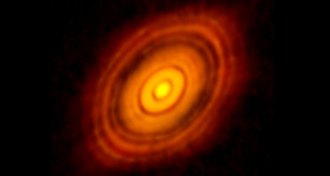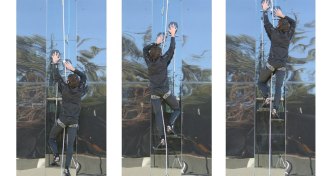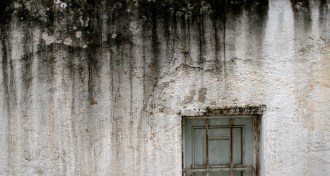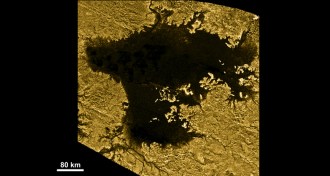All Stories
-
 Neuroscience
NeuroscienceBreathing returns to paralyzed rats
Scar tissue–busting enzyme plus rehabilitation therapy improves respiration long after rats’ initial spinal cord injuries.
By Meghan Rosen -
 Life
LifeNorovirus can play protective role in mice
In mice, viral infection can help intestines develop, strengthen immune system.
-
 Neuroscience
NeuroscienceAreas people like to be caressed match up with nerve fibers
A caress in a sweet spot at the right speed activates nerve fibers tied to social touch.
-
 Planetary Science
Planetary SciencePlanets stake their claim around infant star
At the center of the newly released telescope image is HL Tau, a star located about 450 light-years away in the constellation Taurus. A dense disk of gas and dust surrounds the star, which is a youthful million years old.
-
 Life
LifeSprings bring gecko stickiness to human scale
Springs of a stretchy alloy let gecko-inspired adhesives work at human scales to climb glass walls or grab space junk.
By Susan Milius -
 Planetary Science
Planetary SciencePhilae lander sent in a surprise before going to sleep
The robotic probe that landed on comet 67P/Churyumov-Gerasimenko has beamed back some surprises about the icy boulder.
-
 Neuroscience
NeuroscienceProtein production prevents sleep-loss forgetfulness
Boosting levels of certain proteins in mice prevented memory problems associated with sleep deprivation.
-
 Health & Medicine
Health & MedicineAspirin’s heart benefits not a slam dunk
No survival gain found in people age 60 and over who took daily dose of aspirin.
By Nathan Seppa -
 Life
LifeTasty animals end up on latest list of threatened species
Growing food market lands several species, including Pacific bluefin tuna and Chinese pufferfish, on the IUCN Red List of Threatened Species.
-
 Psychology
PsychologyRight questions could help spot devious air passengers
Training airport security agents to ask detail-oriented questions of travelers may help unmask liars.
By Bruce Bower -
 Neuroscience
NeuroscienceMold may mean bad news for the brain
Living with mold isn’t good for your lungs. A study in mice shows that mold exposure may also cause inflammation that is bad for the brain.
-
 Planetary Science
Planetary ScienceCassini maps depths of Titan’s seas
NASA’s Cassini spacecraft finds that some methane seas on Titan extend more than 200 meters beneath the Saturnian moon’s surface.